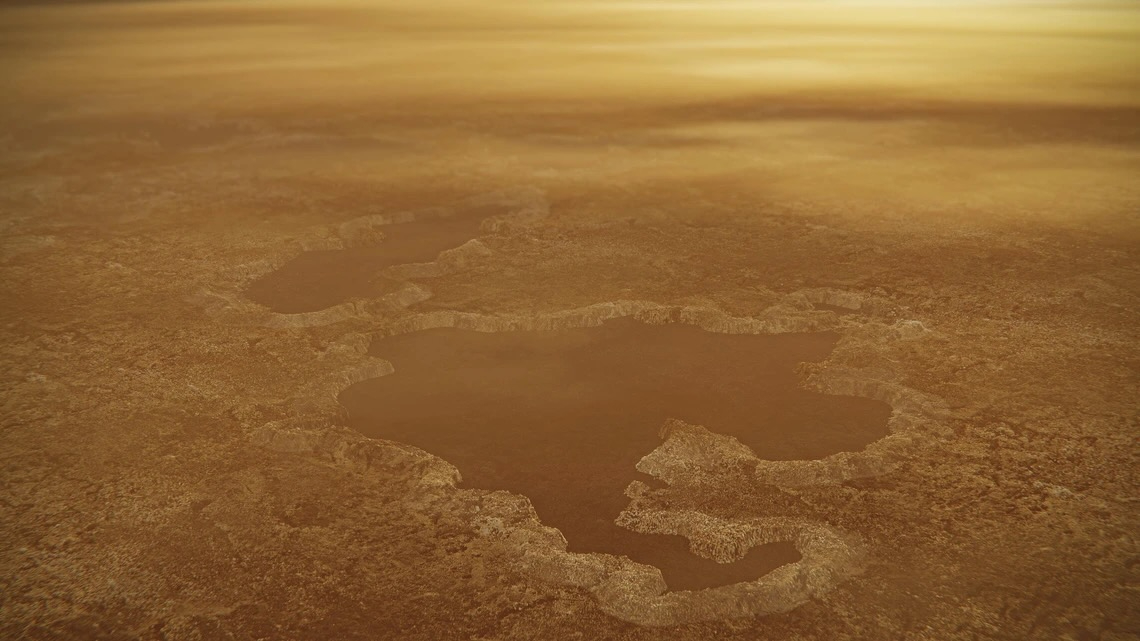Mars 2020 Rover Cost Could Starve Other Red Planet Missions
Growing costs could affect other programs.

The Mars science community is concerned that the growing costs of NASA's Mars 2020 rover mission could reduce the funds available for other robotic missions, according to a presentation that took place during a meeting of NASA's Planetary Science Advisory Committee.
The two-day meeting, which was held in late September in Washington and livestreamed, featured presentations from various groups in the planetary science community examining mission options and science goals for exploration of planets, exoplanets and the Earth. Mars 2020 is a flagship-class mission, or one of NASA's most expensive and robust space-exploration endeavors, with a total cost estimate of $2.46 billion, according to NASA's latest budget request. The mission's launch is practically imminent, targeted for no earlier than July 2020. What comes next is still being determined.
Planetary geologist Aileen Yingst, who is with the Planetary Science Institute, said in a presentation that the community is concerned about the cost growth for Mars 2020 and how that could affect other Mars missions. Yingst is co-investigator on the SHERLOC spectrometer and WATSON sidekick camera on the Mars 2020 rover, as well as chair of the Mars Exploration Program Analysis Group (MEPAG), a team of planetary science experts that helps NASA figure out science priorities for Mars exploration.
Related: 4 Mars Missions Are One Year Away from Launching to the Red Planet
While Yingst (who was representing MEPAG in the presentation) said the community supports Mars 2020, there are concerns about how the mission's budget overruns could be affecting other priorities for Mars exploration. For example, although Yingst did not state this directly, NASA will soon need to order a new Mars orbiter to relay communications between rovers and Earth, because the existing spacecraft orbiting Mars are aging and nearing the end of their lives.
Cost vs. science return
It's common for large, technical space projects to go beyond their cost estimates, in part because the instruments and hardware being developed are so new. Flagship projects such as the James Webb Space Telescope (which may launch in 2021) and the Hubble Space Telescope (which has been operating for 30-plus years, with the help of several astronaut repair teams) far exceeded the cost mark set in their initial budget discussions.
Proponents often argue that the science returns on these over-budget and often-overdue projects do justify the cost. For example, NASA's Curiosity Mars rover, which found evidence of ancient water within weeks after landing in 2012, faced its own overrun, from $1.6 billion to $2.5 billion. And it was two years late in launching. But the rover is still doing work on Mars and has found extensive evidence of water reshaping the landscape in Gale Crater, year after year. In the realm of telescopic missions, Hubble's observations have led to numerous new insights about the universe, including the Nobel-prize-winning discovery that the universe is accelerating in its expansion.
Get the Space.com Newsletter
Breaking space news, the latest updates on rocket launches, skywatching events and more!
In a statement emailed to Space.com, NASA said it's keeping an eye on Mars 2020. The mission is meant to cache promising samples of Red Planet soil — samples that could have evidence that Mars held life in the ancient past — for return back to Earth on a future mission as soon as the 2030s.
"While challenges contributing to cost growth are not uncommon for a Mars surface mission of this complexity, we continue to evaluate the cost impact [of Mars 2020]," said Lori Glaze, NASA's director of planetary science, in a statement emailed to Space.com.
"Entering into this new fiscal year," Glaze continued, "NASA will endeavor to ensure this project has sufficient funding to guard against programmatically disruptive delays. We have a robust Mars science budget, and we are not only looking forward to the exciting astrobiology results of Mars 2020, but we're also excited to be taking the next steps onward to the first Mars sample-return mission."
Years of budgetary growth
The cost of Mars 2020 has been growing for a while. The initial proposed cost for the rover, when the mission was announced in 2012, was $1.5 billion. Six years on, a 2018 Government Accountability Office (GAO) report showed that the cost had soared to $2.46 billion. And in NASA's latest budget, the overrun looks set to grow by as much as 15% (or about another $360 million) beyond that last 2018 estimate, although the latest numbers are yet to be confirmed.
Glaze explained that Mars 2020 is developed with a close eye to the overall goals of NASA's Mars exploration program, a process that "relies on robust dialogue with the community and the National Academy’s solar system decadal surveys to ensure the science goals are prioritized accordingly." (The National Academy of Sciences is a scientific advisory board in the United States that provides advice on future research directions).
Mars 2020's contributions to the overall program include attempting to determine whether life existed on Mars, exploring the Red Planet's climate and geology, and preparing for possible human missions in the 2030s, according to NASA.
The agency's Red Planet science-exploration program, including Mars 2020, is "strongly supported by the community," with each mission to the Red Planet building upon the knowledge of past missions. Indeed, in the rover sequence alone, Mars 2020 will be the fifth NASA rover to reach the surface of Mars, after Sojourner, Spirit, Opportunity and Curiosity, which each probed aspects of the planet's watery past.
Yet the GAO report singled out Mars 2020 and three other NASA programs (such as NASA's Space Launch System megarocket) for "technical challenges that were compounded by risky programmatic decisions," such as holding the critical design review earlier than usual.
"The Mars 2020 project held its critical design review before it had a stable design, at which point it had released about 72% of its expected design drawings," the GAO said. "Project officials stated that they held the design review earlier than normal to avoid delaying the development of heritage technologies, which make up a large percentage of the Mars 2020 rover. As a result of holding the review early, new and highly complex developments were not stable at the time of the design review."
The result was cost growth on two instruments: one on the rover's entry, descent and landing system (which faced unexpected integration challenges) and a technology-demonstration instrument to convert carbon dioxide to oxygen, which proved tougher to develop than expected.
More cost growth in 2019
By March 2019, the mission was facing even more cost growth only 16 months before its expected launch window, which opens in July 2020. This cost growth was rumored for months in the planetary science community but became clear only in NASA's fiscal year 2020 budget proposal, according to SpaceNews.
This time around, the cost growth was due to multiple development issues for several components: SHERLOC (Scanning Habitable Environments with Raman & Luminescence for Organics and Chemicals), an X-ray spectrometer called PIXL (Planetary Instrument for X-ray Lithochemistry) and a caching system designed to hold samples for a future return mission to Earth.
At the time, NASA said it would provide a more precise overrun figure around the same time the agency releases its fiscal 2019 operating plan. That was released last month but is still going through the appropriations process in the House and Senate.
"It [the overrun] is less than 15% over the agreed-upon cost for [Mars] 2020," Glaze, who was then acting director of NASA's planetary sciences division, said during a town hall meeting March 18 at the 50th Lunar and Planetary Science Conference, according to SpaceNews. This would place the additional overrun at no more than about $360 million (or 15% of the last estimate of $2.46 billion).
- In Photos: NASA's Mars 2020 Rover Mission to the Red Planet
- NASA Asks Students to Name Its Mars 2020 Rover
- Feel the Burn! Watch NASA's 2020 Mars Rover Do a Bicep Curl (Video)
Follow Elizabeth Howell on Twitter @howellspace. Follow us on Twitter @Spacedotcom and on Facebook.
Join our Space Forums to keep talking space on the latest missions, night sky and more! And if you have a news tip, correction or comment, let us know at: community@space.com.

Elizabeth Howell (she/her), Ph.D., was a staff writer in the spaceflight channel between 2022 and 2024 specializing in Canadian space news. She was contributing writer for Space.com for 10 years from 2012 to 2024. Elizabeth's reporting includes multiple exclusives with the White House, leading world coverage about a lost-and-found space tomato on the International Space Station, witnessing five human spaceflight launches on two continents, flying parabolic, working inside a spacesuit, and participating in a simulated Mars mission. Her latest book, "Why Am I Taller?" (ECW Press, 2022) is co-written with astronaut Dave Williams.









